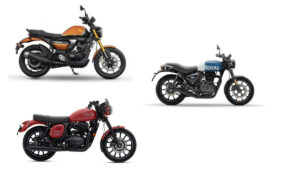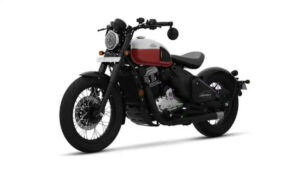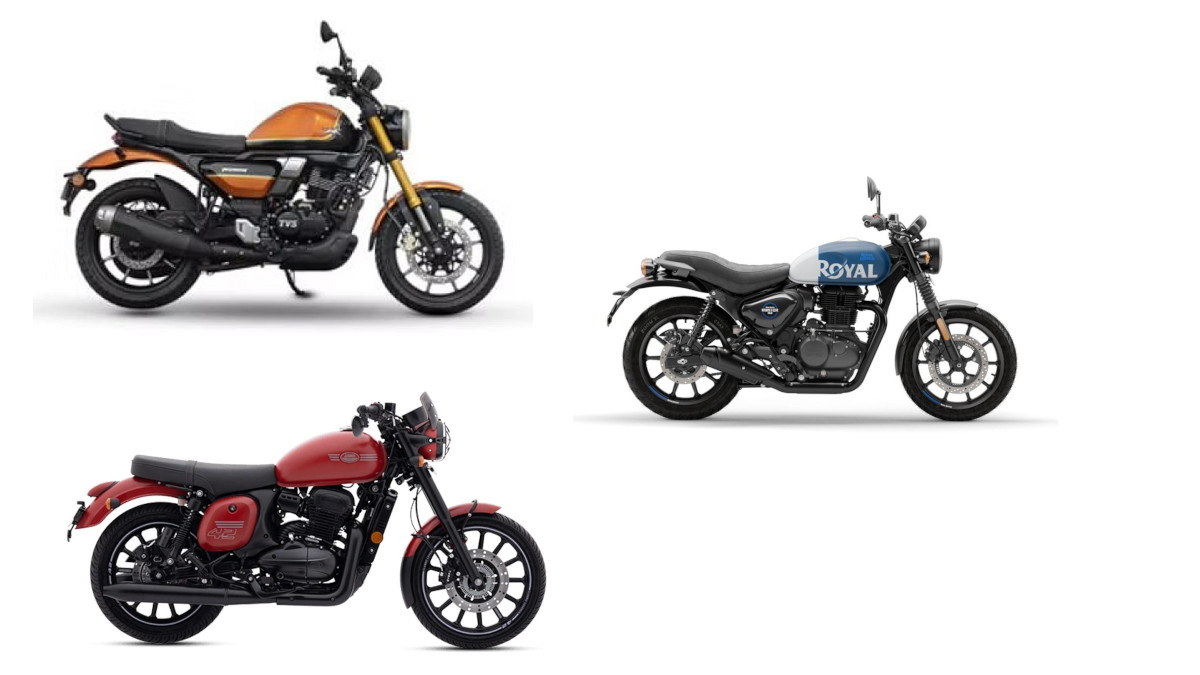The middleweight motorcycle segment, specifically in the 300 to 400cc range, is becoming increasingly popular and lucrative for motorcycle manufacturers. Companies like Triumph, Bajaj, Harley-Davidson, Hero MotoCorp, and Aprilia are all entering this segment with their respective partnerships and new models.
Middleweight segment

India, the largest motorcycle market in the world with a growing population of riders, has become a key focus for these manufacturers. They are first launching their middleweight bikes in India and then planning to expand into other international markets. This strategy makes sense considering the significant market potential in India and the increasing demand for motorcycles in this segment.
Rajiv Bajaj, the managing director of Bajaj, has stated that he expects Triumph to sell around 40,000 to 50,000 units of their TR-platform bikes annually in the next year or so. This indicates the high sales potential of middleweight motorcycles in India.
Crucial partnerships
The partnerships between manufacturers like Triumph and Bajaj and Harley-Davidson and Hero MotoCorp allow for resource sharing, access to different markets, and the ability to navigate import tariffs and pricing structures effectively. These partnerships play a crucial role in the development and success of the middleweight bikes.

It’s worth noting that Triumph’s TR-platform bikes, such as the Speed 400 and Scrambler 400 X, will be exclusive to Triumph and won’t be used by Bajaj for their future bikes. In contrast, the partnership between Harley-Davidson and Hero MotoCorp involves sharing platforms for their respective models.
Furthermore, Pierer Mobility, the parent company of KTM, has announced plans to strengthen its cooperation with CFMOTO, a Chinese motorcycle manufacturer. This partnership aims to meet the increasing market demand in China and the Asian region.
Growth
Overall, the middleweight motorcycle segment is experiencing significant growth, and manufacturers are actively targeting this market to meet the demand for more powerful bikes without crossing the threshold into higher displacement categories. The partnerships between international and local manufacturers allow for effective market penetration and product development tailored to the specific needs of the target markets.

Key developments in the middleweight motorcycle segment in recent years in numbers:
- Number of new models launched: In 2022, over 50 new middleweight motorcycles were launched worldwide. This is a significant increase from previous years, showing that the segment is growing rapidly.
- Average engine displacement: The average engine displacement of a middleweight motorcycle has increased in recent years. 2022 the average engine displacement was 400cc, up from 350cc in 2021. This trend will continue as manufacturers offer more powerful and performance-oriented motorcycles in this segment.
- Price range: The price range of middleweight motorcycles has also increased in recent years. In 2022, the average price of a middleweight motorcycle was $5,000, up from $4,000 in 2021. This trend will continue as manufacturers offer this segment more premium and feature-rich motorcycles.
- Market share: The middleweight motorcycle segment is now the largest segment globally, with a market share of over 20%. This trend will likely continue as more people look for smaller, more affordable motorcycles.

Here are some of the key developments in the middleweight motorcycle segment in recent years:
- 2017 Triumph and Bajaj announced a partnership to develop and manufacture middleweight motorcycles. The first fruits of this partnership, the Speed 400 and Scrambler 400 X, are launched in India.
- In 2021, Harley-Davidson and Hero MotoCorp announced a partnership to develop and manufacture middleweight motorcycles. The first motorcycle from this partnership, the X440, was launched in India.
- Piaggio Group, the parent company of Aprilia, has also been active in the middleweight motorcycle segment. In 2022, the company launched the Aprilia Tuono 300 in India.
- Jawa, a Czech motorcycle brand revived in India in 2018, has also been active in the middleweight motorcycle segment. The company currently offers the Jawa 300 and Jawa Forty-Two 300 motorcycles in India.
Here are some additional details that you may find interesting:
- The middleweight motorcycle segment is typically defined as bikes with engines ranging from 300cc to 500cc.
- The segment is growing rapidly in India, China, and other Asian countries.
- The segment is also becoming more popular in developed countries as more and more people are looking for smaller, more affordable bikes.
- Some popular middleweight motorcycles include the Honda CB300R, the KTM Duke 390, and the Yamaha MT-03.
In recent years, the middleweight motorcycle segment has seen several key developments. Here are some notable ones:
- Increased Focus and Investment: Motorcycle manufacturers have recognized the growing demand for middleweight motorcycles and have increased their focus and investment. They see it as a lucrative market balancing performance, affordability, and practicality.
- Partnerships and Collaborations: Manufacturers have formed partnerships and collaborations to strengthen their position in the middleweight segment. These partnerships often involve international and local manufacturers leveraging their strengths, sharing resources, and accessing new markets. Examples include the partnerships between Triumph and Bajaj, Harley-Davidson and Hero MotoCorp, BMW Motorrad and TVS Motor Company.
- Entry of Established Brands: Established motorcycle brands primarily known for their larger displacement bikes have entered the middleweight segment to cater to a wider range of riders. This expansion allows them to tap into the growing demand for mid-sized motorcycles and attract new customers.
- Technological Advancements: Middleweight motorcycles have benefited from technological advancements, with manufacturers incorporating features and technologies typically found in larger displacement bikes. These advancements include advanced electronics, improved engine performance, better suspension systems, and enhanced safety features.
More key developments
- Growing Market in Developing Countries: Developing countries like India, China, and Southeast Asian nations have witnessed significant growth in the middleweight motorcycle segment. The rising middle class, increasing urbanization, and changing consumer preferences have contributed to the growth of this market.
- Diversification of Models: Manufacturers have introduced a diverse range of models in the middleweight segment to cater to different riding preferences. This includes naked/street bikes, cruisers, adventure bikes, sport bikes, and retro-styled motorcycles. The availability of various styles and designs provides consumers with more choices in this segment.
- Shift towards Small Displacement Bikes: While the focus is primarily on the 300 to 400cc range, there has also been a trend towards smaller displacement middleweight motorcycles, particularly in markets where licensing restrictions or tax structures favour lower displacement bikes. These smaller middleweights, such as 250cc or 200cc models, offer similar styling and features but with more accessible power for entry-level riders.
- Increased Competition: With more manufacturers entering the middleweight segment, competition has intensified. This has resulted in a wider range of options for consumers and has pushed manufacturers to innovate and differentiate their offerings to attract customers.
Conclusion
the middleweight motorcycle segment has experienced significant developments in recent years, driven by the growing demand for motorcycles that balance performance, affordability, and practicality. Manufacturers have recognized the potential of this segment and have made strategic investments, partnerships, and collaborations to strengthen their position.
The entry of established brands into the middleweight segment, along with technological advancements, has resulted in the availability of diverse models with advanced features and performance. This has provided consumers a wider range of options to suit their riding preferences.
Asian Market
The market for middleweight motorcycles has particularly grown in developing countries, such as India, China, and Southeast Asian nations, where factors like a rising middle class and changing consumer preferences have fueled demand. These markets present immense opportunities for manufacturers to tap into the growing customer base.
Competition
The competition within the middleweight segment has increased as more manufacturers vie for market share. This has led to innovation, differentiation, and the introduction of new models, ultimately benefiting consumers with more choices and improved features.
Overall, the middleweight motorcycle segment is thriving, and manufacturers are actively investing in this segment to cater to the needs and aspirations of riders worldwide. With ongoing developments and an expanding market, the future looks promising for middleweight motorcycles.
Autocar Professional, Pierer Mobility Annual Report 2022, Economic Times, Bloomberg





































